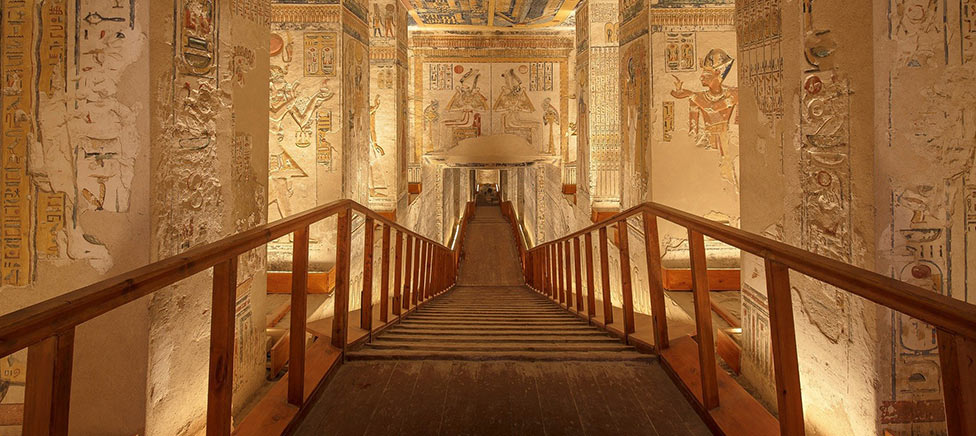To visit the ancient wonders of Egypt is to follow a path carved out through millennia by the Greeks, Romans, Medieval pilgrims, Egyptologists and, now, travelers.
Visitors to Egypt are drawn to witness the logic-defying feats of engineering that are the Pyramids of Giza, to see colossal temples and tombs that offer up the secrets of the Pharaohs (Egypt’s kings and queens) and the gods they worshipped.
Beyond the astonishing antiquities, it’s a magical country that swirls with myth, legend and mysticism.
Here’s what I wish I knew before going:
1. The pyramids are anti-climactic:
The iconic image of the pyramids, with its backdrop of endless desert, is a clever trick, as we discover after navigating the congested highways of Cairo, a city of 22 million people. The Giza Pyramids complex lies on the west bank of the Nile, on the city’s outskirts, barely a stone’s throw from the crammed high-rises and bustling bazaars of the sprawling metropolis.
Still, nothing can detract from the majesty of Giza, one of the Seven Wonders of the Ancient World. The unesco Heritage-listed site is home to six pyramids; magnificent burial tombs built for the kings of the 4th dynasty around 4,500 years ago. This includes The Great Pyramid, built for King Khufu, and its cloud-grazing 480ft (146m) apex. Keeping loyal guard is the Sphinx – a mythical hybrid of human and lion.
In the shadow of the pyramids, camel owners seek shade for their animals on breaks, in between offering 15-minute rides at a cost of around US $30. Even having your photograph taken with one can cost around US $10. Though the majority of the camels look healthy and well-cared for, it’s an activity that does not sit well with every traveler.
We each pay US $11 to join the queue to go inside Khufu’s Pyramid. A fairly steep (and slightly scary) descent on a narrow wooden walkway takes us to the inner chamber. I’m expecting to be blinded by a dazzling haul of treasures, but the tiny room is airless and threadbare, stripped of its treasures thousands of years ago by opportunistic robbers. Thankfully, I don’t suffer from claustrophobia, but the experience is a little anti-climactic.
2. I needed more time at the Egyptian Museum of Antiquities:
Due to open towards the end of 2020, hopes are high that the new, $1 billion Grand Egyptian Museum will put Cairo firmly back on the tourist map, following a difficult few years in the wake of the 2011 revolution and several terrorist attacks. The impressive modernist glass construction – which will feature an earth-to-heaven viewing platform of the pyramids, is being heralded as the largest archaeological museum in the world.
I visit the current museum, the Egyptian Museum of Antiquities, an oasis of calm in the heart of the frenetic capital city. The red-hued building has a faded colonial charm and houses an incredible 120,000 artefacts. For an entrance price of just US $4, many of the rare treasures we’d expected to see inside the pyramids are on display here. This extends to the pharaohs themselves; many discovered in The Valley of The Kings, the world-renowned royal burial ground on the Nile’s west bank.
A US $6 ticket allows you entrance into the Royal Mummy Room. However, it may not be for everyone; gazing upon the preserved kings and queens makes for a unique, if unsettling experience. The ‘star’ of the exhibition is Ramses I. His mummified remains are almost perfectly intact, and we fall into an awed silence when it dawns on us that we’re looking at the (reddish) hair and teeth of a man who walked the earth over 3,000 years ago.
The somber atmosphere lifts when we move on to the other main draw of the museum, the King Tutankhamun collection. He is the most well-known Egyptian pharaoh, despite only ruling for a short while. The ‘boy king’ was only nine years old when he became ruler.
In 1922, British archaeologist Howard Carter unearthed an outstanding collection of treasures in Tutankhamun’s tomb in The Valley of The Kings, which revealed the Egyptian’s belief in the afterlife. These include King Tut’s solid gold bed, his intricately carved throne and chariot, plus hundreds of other everyday items, all buried to make the Pharaoh’s next life as comfortable as possible.
We only have a couple of hours at the museum, not enough time to truly appreciate the incredible haul of artefacts. However, the current space doesn’t do the priceless exhibits much justice and the new museum, which will cover a space of over 50 hectares should solve that problem. If I needed an excuse to return, this is it.
3. Egypt would make me fall in love with boat travel:
I’ve never really ‘got’ cruising. Why would you want to be stuck on a ship for hours on end, wasting precious time to explore on land? However, when I jump onboard the Medea, my home for three days as I travel from Luxor to Aswan, that changes instantly.
It turns out to be the perfect way to explore the Nile and the treasures that line its west bank. I’ve lucked out with my accommodation: a cabin at the ship’s bow that offers 360º views.
Ploughing gently through the biblical waters, we see rural villages little changed by time. Oxen bask lazily in the midday heat and children play on the river banks, stopping to wave and squeal excitedly at the passing boats.
Cruising also offers a great way to hop off to visit the temples, including Kom Ombo, the only one dedicated to two gods: the crocodile-headed Sobek and falcon-headed Horus the Elder. Many still have intact hieroglyphics adorning their walls, providing a fascinating insight into Egyptian culture.
I’m getting used to extremely early starts on our tour. It’s not unusual to have 5am alarm calls, as the mercury can nudge 89ºF (32ºC) by midday (even in October when I’m there), so getting up early is a practicality of traveling here.


